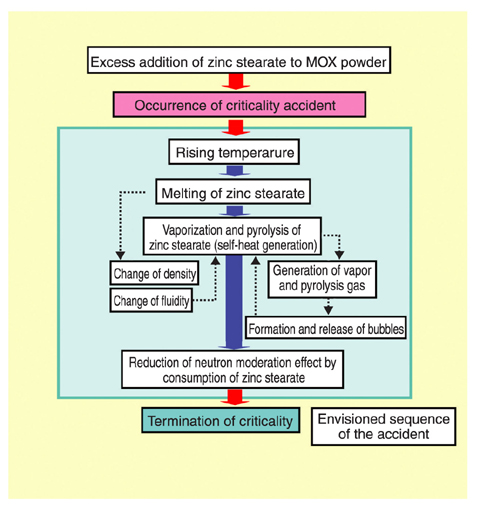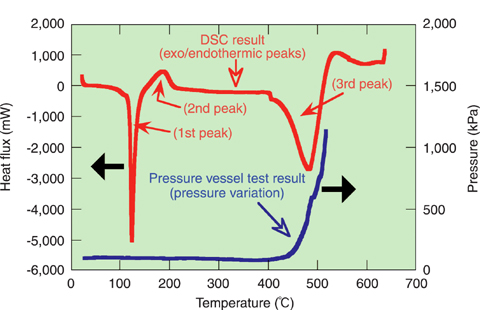
Fig.5-15 Progress of criticality accident assumed in this study

Fig.5-16 Experiment results regarding pyrolysis properties of zinc stearate
To confirm safety of a nuclear fuel facility, evaluation of the influence to the environment after a hypothetical criticality accident is important. Data and a method for estimating total fission number and time history of power are necessary for this evaluation. In the MOX fuel fabrication facility being planned, a dry process will be adopted as main process, but zinc stearate ((CH3(CH2)16COO)2Zn) will be added to the MOX powder as an additional material to adjust the density. If too much of the zinc stearate is added by mistake, the criticality characteristics of the MOX powder will be influenced because of its neutron moderation effect. If a criticality condition should be induced by the excess addition, melting and pyrolysis of the zinc stearate could be caused by the fission energy, and therefore, the kinetic characteristics of the MOX fuel would be affected in a feedback mechanism. Consumption of the zinc stearate by pyrolysis should be a criticality terminating mechanism (Fig.5-15). In this study, exothermic and endothermic properties and gas release behavior due to pyrolysis of zinc stearate were examined by differential scanning calorimeter (DSC) and pressure vessel tests, respectively, and an evaluation model for pyrolysis properties of the zinc stearate during this accident was developed.
Fig.5-16 shows examples of the experiment results. From the DSC results, the zinc stearate was recognized as a stable material without radical exothermic reaction. It indicated some ego/endothermic peaks with rising temperature and a large endothermic peak over about 400°C (3rd peak). Since the rapid rise in pressure over about 400°C was also observed in the pressure vessel test, the 3rd peak can be attributed to the progress of pyrolysis. The calorific values and reaction rates of the respective peaks were estimated from the DSC result and average molecular weight of the pyrolysis gas was estimated by the pressure vessel test result. Moreover, variation of the physical and chemical conditions of the zinc stearate during the accident could be simulated well using our calculation model based on the data. In the future, by establishing a link between this model and a detailed kinetic characteristic analysis code, a method for evaluating kinetic characteristics of the MOX fuel which takes fluidity and density variation with melting of the material into consideration will be investigated.